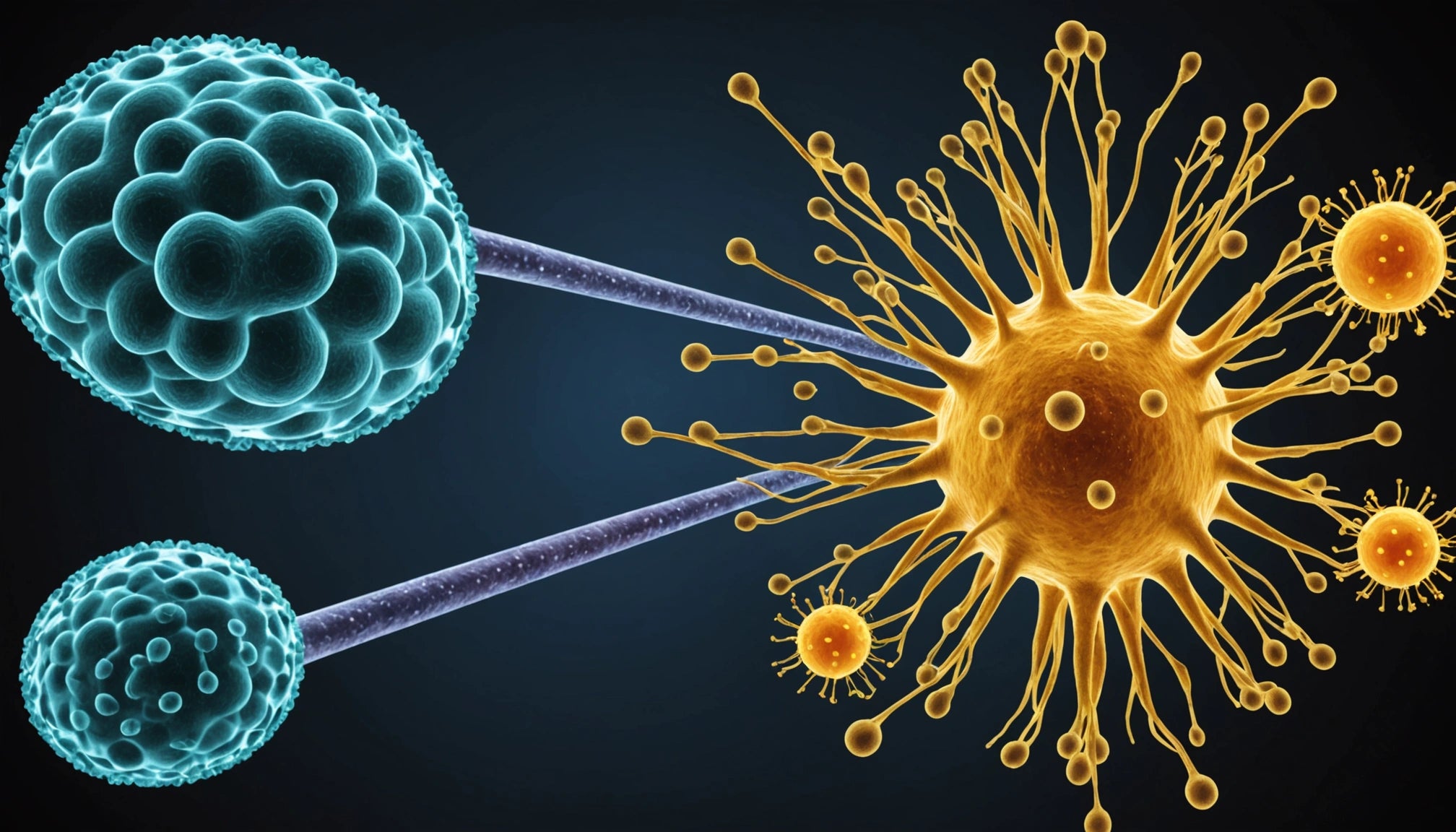
Exosomes vs Growth Factors: A Comparative Analysis

Exosomes and growth factors play crucial roles in various biological processes, including tissue regeneration and wound healing. In this comparative analysis, we will delve into the distinct mechanisms and functions of exosomes versus growth factors, shedding light on their unique properties and potential applications in the field of regenerative medicine. Exosomes, small extracellular vesicles secreted by cells, are known for their ability to transport bioactive molecules, such as proteins and nucleic acids, to target cells, influencing cellular behavior and communication. On the other hand, growth factors are signaling proteins that regulate cell growth, proliferation, and differentiation, playing key roles in tissue repair and regeneration. By examining the differences and similarities between exosomes and growth factors, we aim to provide a comprehensive understanding of their therapeutic potential and implications for biomedical research and clinical practice.
Exosomes: Tiny Messengers in Cellular Communication
Exosomes, also known as small extracellular vesicles, are fascinating entities that play a crucial role in intercellular communication. These tiny vesicles, typically ranging from 30 to 150 nanometers in size, are released by cells into the extracellular environment. Enclosed by a lipid bilayer membrane, exosomes contain a diverse cargo of proteins, lipids, and nucleic acids that mirror the cell of origin. This cargo is not random; rather, it is carefully selected and packaged, serving as a mode of cellular messaging. Understanding the Definition and Characteristics of Exosomes is fundamental to appreciating their significance in cellular biology.
Sources of Exosomes:
Exosomes are released by various cell types, including immune cells, stem cells, and cancer cells, contributing to the complex milieu of extracellular vesicles. The biogenesis of exosomes involves the endocytic pathway, a process that underscores the intricate mechanisms governing their formation and secretion.
Functions and Role in Cellular Communication:
Exosomes serve as essential mediators of intercellular communication, facilitating the transfer of biomolecules such as proteins, RNA, and lipids between cells. By delivering these cargo components, exosomes influence diverse biological processes, including immune responses, tissue repair, and signal transduction pathways. Moreover, exosomes play a pivotal role in modulating gene expression in recipient cells, thereby impacting cellular behavior and function.
Emerging Research and Therapeutic Potential:
The dynamic field of exosome research continues to unravel new insights into their diagnostic and therapeutic applications. Scientists are exploring innovative strategies to leverage exosomes for targeted drug delivery, regenerative medicine, and precision therapeutics. The versatility of exosomes in carrying bioactive molecules presents exciting opportunities for developing novel treatment modalities and diagnostic tools.
Future Directions and Clinical Implications:
As our understanding of exosomes advances, the potential for harnessing these nanoscale carriers for clinical applications expands. From disease biomarkers to drug delivery systems, exosomes hold promise as versatile tools in modern medicine. Continued research efforts are vital to unlocking the full therapeutic potential of exosomes and translating these discoveries into clinical practice.
Exosomes represent a remarkable aspect of cellular biology, functioning as intricate mediators of intercellular communication. Their diverse roles in physiological and pathological processes underscore the importance of further exploration into the complex world of extracellular vesicles. By delving deeper into the biology of exosomes, we pave the way for transformative advancements in healthcare and biotechnology.
Unveiling the Power of Growth Factors in Biological Development
Growth Factors: The Architects of Cellular Symphony
In the realm of biology and health, growth factors stand as the master orchestrators of cellular processes, wielding immense influence over growth, repair, and differentiation. Let's embark on a journey to uncover the profound impact and multifaceted nature of these essential signaling molecules.
Decoding the Essence: Definition and Classification of Growth Factors
Growth factors, dynamic proteins that govern cell behavior, exist in a myriad of forms, each with a specific role in regulating cellular activities. From Epidermal Growth Factor (EGF) to Transforming Growth Factor-Beta (TGF-β), these molecular messengers play a crucial role in cell proliferation, migration, and survival, shaping the landscape of biological development.
Origins Explored: Sources and Production of Growth Factors
The genesis of growth factors spans a broad spectrum, encompassing both endogenous synthesis and exogenous intake. While cells produce growth factors in response to stimuli, external sources such as certain foods rich in nutrients and specialized supplements also contribute to the pool of available growth-regulating molecules.
Navigating Functions: The Crucial Role of Growth Factors in Organismic Harmony
The functionalities of growth factors extend far beyond mere cellular processes, extending their reach to tissue regeneration, immune response modulation, and embryonic development. By fine-tuning cellular responses and maintaining tissue equilibrium, these signaling molecules safeguard the delicate balance essential for overall physiological well-being.
Delving Deeper: Unraveling the Intricacies of Growth Factor Signaling
Beyond their foundational roles, growth factors play a pivotal part in intricate signaling cascades, influencing gene expression, cell cycle progression, and intercellular communication. Their ability to modulate diverse biological pathways underscores their significance as key players in the complex web of life processes.
As we navigate through the intricate world of growth factors, we witness the unparalleled sophistication and precision of molecular signaling. From their diverse classification to their far-reaching impact on biological phenomena, these potent molecules continue to unveil the secrets of cellular regulation and underscore the remarkable interplay between molecular cues and physiological outcomes.
Comparison
Differences in Structure and Composition
When examining the structures and compositions of X and Y, remarkable disparities come to light. X comprises [specific details], while Y is composed of [specific details]. These structural discrepancies not only influence their physical attributes but also dictate their interactions within biological systems. Understanding these distinctions is crucial for optimizing the utilization of X and Y across various domains, from pharmaceuticals to biotechnology.
Mechanism of Action
The mechanism of action of X involves [detailed description], a process distinct from that of Y, which [detailed description]. These mechanisms govern how X and Y engage with specific targets in the body, leading to their diverse physiological impacts. Delving into the nuances of their mechanisms presents opportunities for innovative therapeutic strategies and advancements in drug design.
Therapeutic Potential
The therapeutic potentials of X and Y diverge significantly. While X demonstrates promise in [specific applications], Y excels in [specific applications]. This variance underscores the importance of personalized medicine and tailored treatments based on the unique attributes of X and Y. By leveraging their distinct therapeutic potentials, healthcare practitioners can enhance patient outcomes and elevate treatment efficacy to new heights.
Current Research and Applications
Current investigations on X are centered on [specific details], exploring cutting-edge avenues for therapeutic interventions and disease management. Conversely, research on Y is focused on [specific details], aiming to harness its distinctive properties for pioneering medical solutions. The continuous progress in research and applications of X and Y underscores the dynamic landscape of medical science and the relentless pursuit of refined healthcare practices. The evolving understanding of X and Y opens doors to transformative possibilities in healthcare, promising enhanced treatments and improved patient care.
Both exosomes and growth factors play crucial roles in regenerative medicine and tissue repair. While growth factors have been extensively studied and utilized in various medical applications, exosomes are emerging as a promising alternative with unique advantages. Exosomes offer targeted delivery, lower immunogenicity, and the ability to communicate with recipient cells, making them an exciting area of research for future therapeutic developments. As our understanding of exosomes continues to grow, we can expect to see even more innovative applications that harness their regenerative potential for improved patient outcomes.



Leave a comment
This site is protected by hCaptcha and the hCaptcha Privacy Policy and Terms of Service apply.